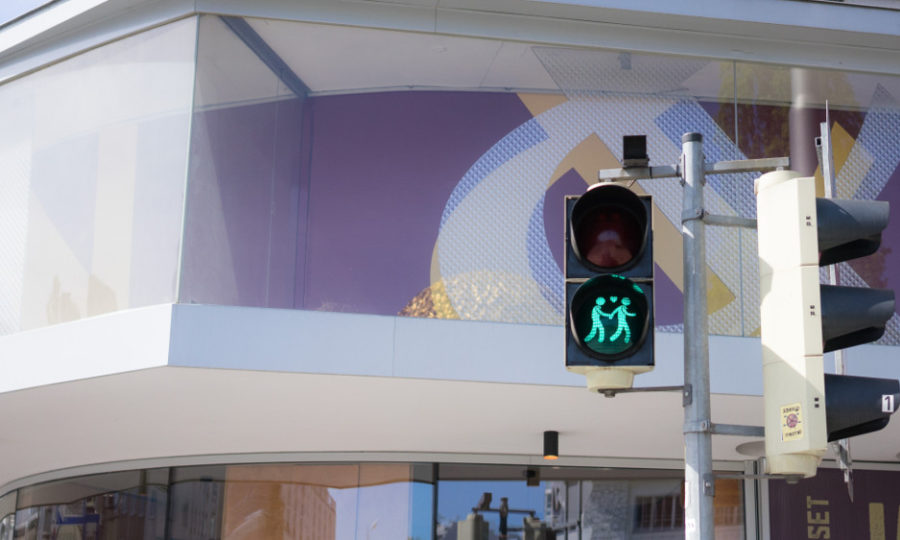I’m excited to me back in the class, discussing and learning with students. I thought I would share parts of my Queer Theory course on this space so people can see what we’ll be doing–and of course, I always welcome suggestions and critical feedback. This course is cross-listed between Women’s Studies and Philosophy.
One goose at a time
Curious about the subtitle, “One goose at a time”? Join us on October 5 to discuss Alex Johnson’s “How to Queer Ecology: One Goose at a Time.”
I taught a queer studies course during my time at Hood College. Although I am grateful for the foundation that course provided me, I’m doing a few things differently this time around. One major change is that we’re slowing down to spend more time on modules rather than rushing through topics. In their introduction to the Routledge Queer Studies Reader, Donald E. Hall and Annamarie Jagose describe editing an anthology as “a delicate and testing business.” I definitely felt the pain of syllabus construction, in choosing topics/readings while excluding others. But the goal is to provide students more time to dwell with thinkers and ideas! Many of the texts we’re working with are now classics, and there are some contemporary pieces sprinkled through as well.
In terms of assignments, we’ll be writing fan fiction as an exercise in reading queerly and thinking philosophically, analyzing arguments that challenge us intellectually/viscerally, and leveraging queer theory to critique heteronormativity and its intersections with other injustices that structure our everyday lives.
Reading queerly
Module 1 focuses on reading queerly, helping us to develop a queer way of perceiving and moving through the world. Biologist Anne Innis Dagg will be joining us when we discuss queering nature.
- Eli Clare, “A Note on Reading this Book: Thinking about Trigger Warnings” from Brilliant Imperfections
- Martin Cannon, “The Regulation of First Nations Sexuality”
- David Halperin, “How to Do the History of Male Homosexuality” from How to do the History of Homosexuality
- Chris Finley, ”Decolonizing the Native Body (and Recovering the Native Bull-Dyke)” from Queer Indigenous Studies
- Eve Kosofsky Sedgwick, “Queer and Now” from Tendencies
- Welcome to Africville film
- Rinaldo Walcott, “Outside in Black Studies: Reading from a Queer Place in the Diaspora” from Black Studies: A Critical Anthology
- Wendy Pearson, “Alien Cryptographies: The View from Queer”
- Anne Innis Dagg, selections from Smitten by Giraffe on homosexuality in the animal world
- Alex Johnson, “How to Queer Ecology: One Goose at a Time”
To resist or revise? Inhabiting norms
Module 2 looks at the relation between queerness and resisting norms. In working to achieve social justice, are we reproducing heteronormativity? How do we inhabit and dwell with social norms? Do we resist or revise? Trevor Holmes, educational developer and Gothic studies specialist, will be joining us on Halloween to discuss queer vampires!
- Judith Butler, “Critically Queer”
- Marilyn Frye, “Willful Virgin or Do You Have to be a Lesbian to be a Feminist?” from Willful Virgin: Essays in Feminism
- Sara Ahmed, “Queer Feelings” from The Cultural Politics of Emotion
- Ellis Hanson, “Undead” from Inside/Out: Lesbian Theories, Gay Theories
- Trevor Holmes, “Coming Out of the Coffin: Gay Males and Queer Goths in Contemporary Vampire Fiction” from Blood Read: The Vampire as Metaphor in Contemporary Culture
- Gregory Tomso, “Viral Sex and the Politics of Life”
- Helen Hok-Sze Leung, “Archiving Queer Feelings in Hong Kong”
Embodying queerness
Module 3 explores ways in which queer critiques and theorizing arise from embodied experiences. Although the titles suggest a heavy emphasis on transgender, there’s quite a bit about queer sexuality too.
- Jack (Judith) Halberstam, “Transgender Butch: Butch/FTM Border Wars and the Masculine Continuum” from Female Masculinity
- Jean Bobby Noble, “Our Bodies are Not Ourselves: Tranny Guys and the Racialized Class Politics of Incoherence” from Queerly Canadian
- Lucas Cassidy Crawford, “Transgender without Organs?: Mobilizing a Geo-Affective Theory of Gender Modification”
- Alexandre Baril, “Transness as Debility: Rethinking Intersections between Trans and Disabled Embodiments”
- Eli Clare, “Twitches and Tremors” from Brilliant Imperfections
- Iain Moreland, “What Can Queer Theory Do for Intersex?”
- Rachel Burgess, “Feminine Stubble”
In addition to the material listed above, I am hoping to have a panel of scholars talk about how they apply queer theory in their research. We have space in the reading schedule for students to select a topic. Goodness knows there are important topics left out, such as sadomasochism and queerness for one example.
What are some of your favorite queer theory pieces? What kind of course assignments have been meaningful to you or have enabled you to queer the classroom experience? Get in touch.
Photo credit
Photo by Stefan Steinbauer on Unsplash
